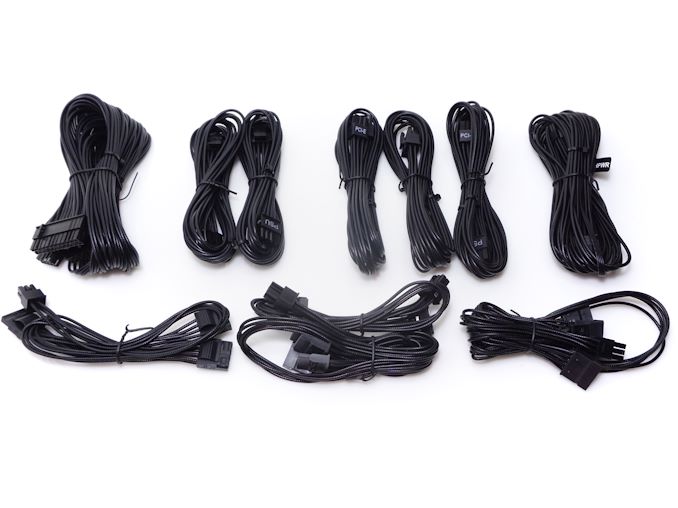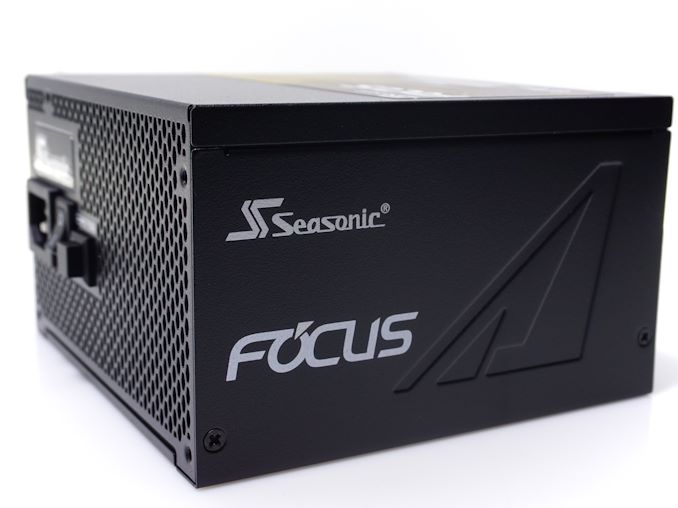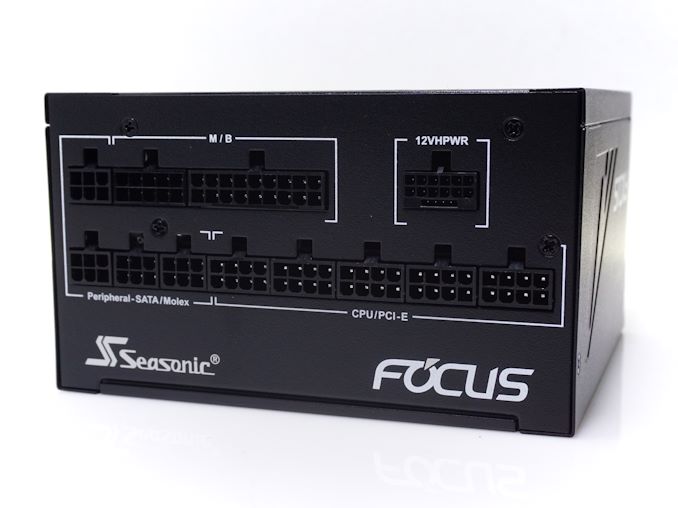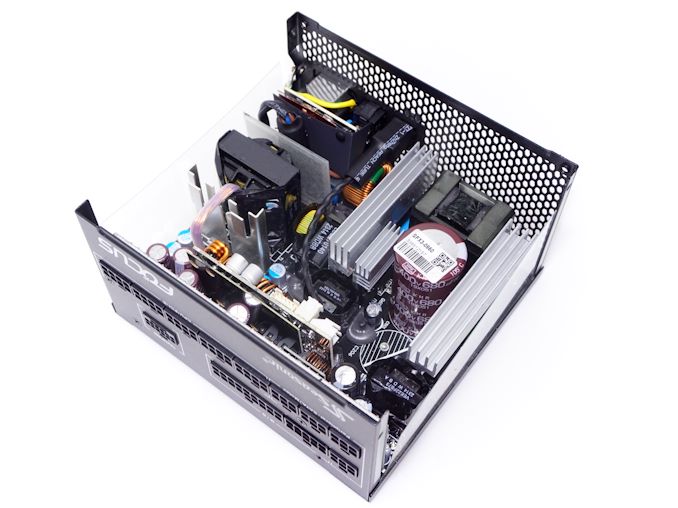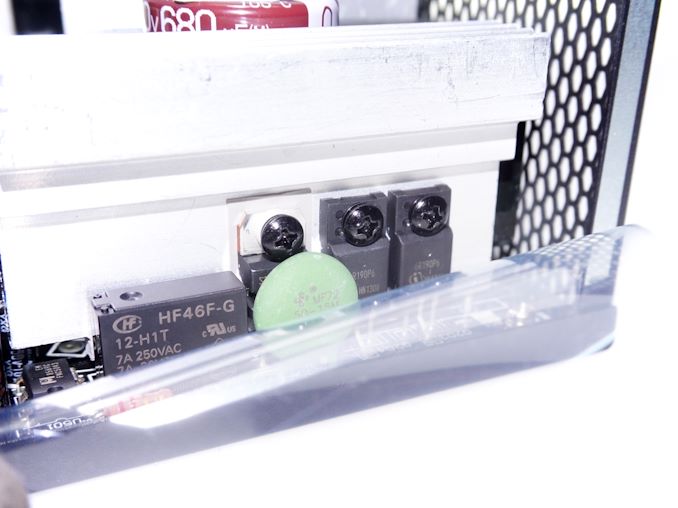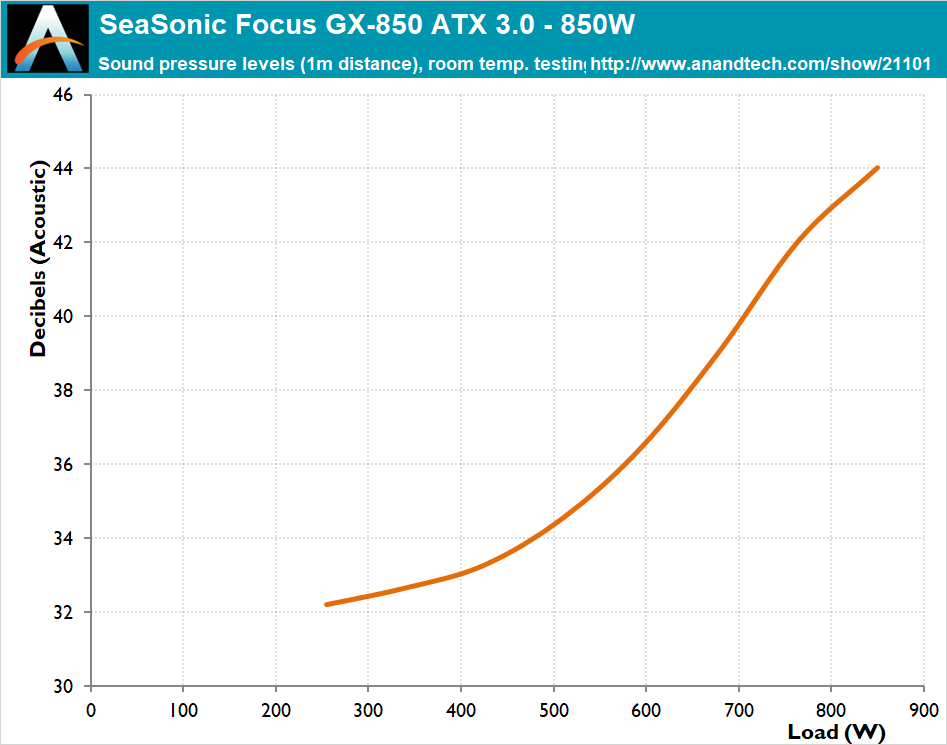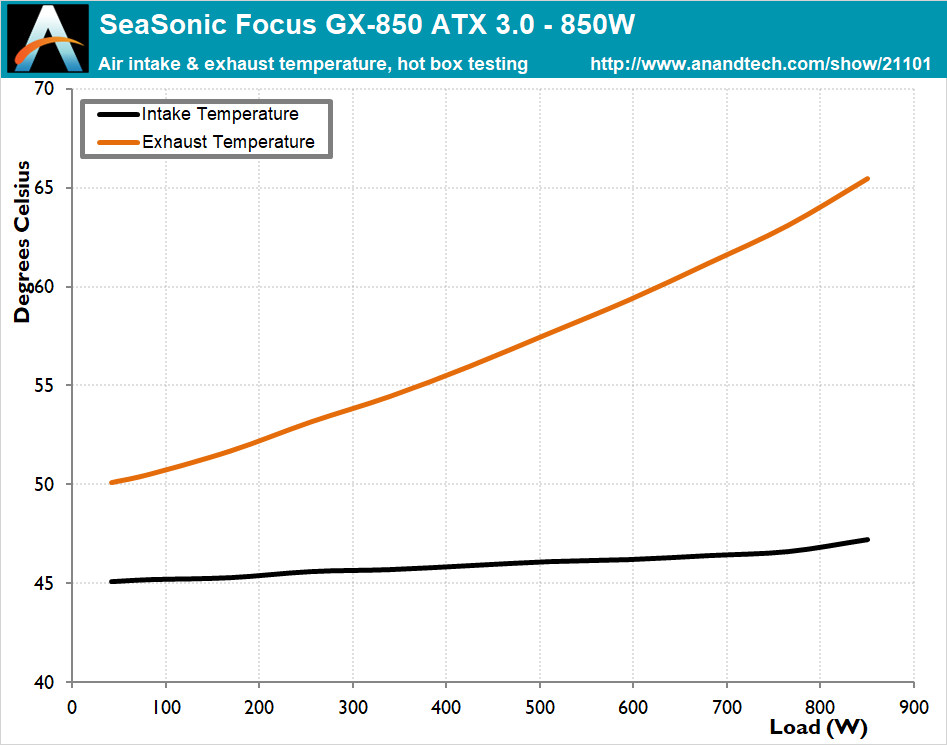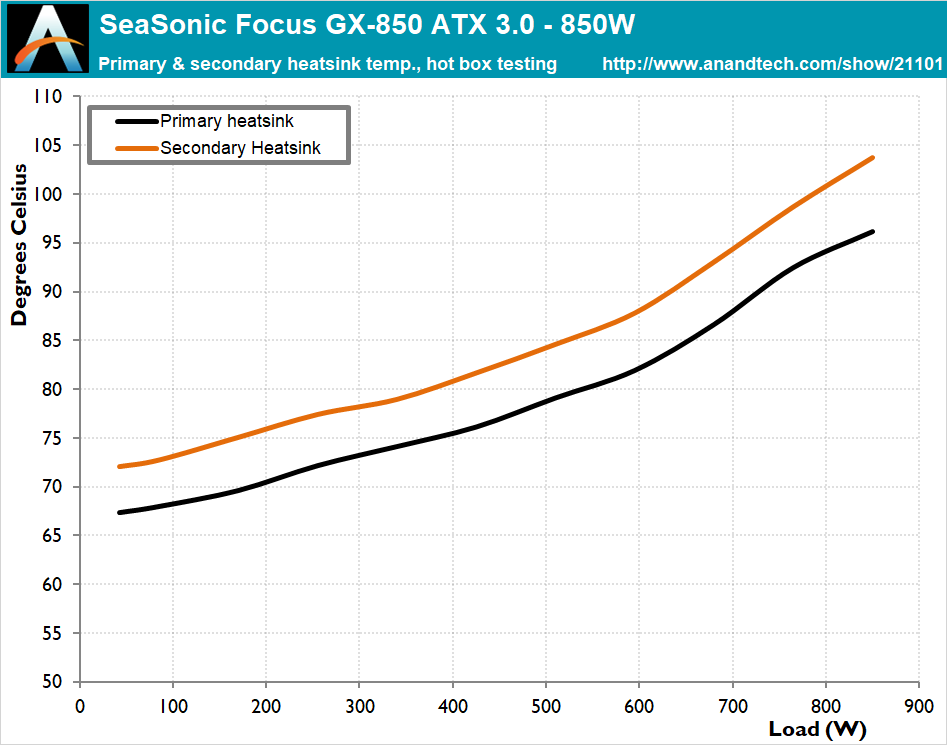
The SeaSonic Focus GX-850 ATX 3.0 PSU Review: Cool, Quiet, and Robust
2023-11-29In the realm of power supply units (PSUs), the core underpinning of any high-performance computing system, seasoned market players have continually raised the bar in delivering efficient, reliable, and technologically superior products. One such stalwart in the PSU domain is SeaSonic, whose meticulous engineering and innovation have repeatedly set industry benchmarks.
In today’s review, we are having a look at the ATX 3.0 upgrade of SeaSonic’s revered Focus series, which epitomizes a fine balance between cost and performance aimed at catering to a broad spectrum of PC enthusiasts and builders. It is the successor of the Focus Plus series, which used to be SeaSonic’s most popular series over the past several years.
The new Focus GX series consists of five units with a power output ranging from 550 Watts to 1.000 Watts. It is the second most powerful unit of the series that we will be putting to the test, the Focus GX-850. SeaSonic is placing its marketing efforts mostly on the exceedingly long 10-year manufacturer’s warranty, its compact size, the 80Plus Gold efficiency certification, and the modular design.
| SeaSonic Focus GX-850 ATX 3.0 (SSR-850FX) Power specifications ( Rated @ 50 °C ) |
|||||
| RAIL | +3.3V | +5V | +12V | +5Vsb | -12V |
| MAX OUTPUT | 20A | 20A | 70A | 3A | 0.3A |
| 100W | 840W | 15W | 3.6W | ||
| TOTAL | 850W | ||||
| AC INPUT | 100 – 240 VAC, 50 – 60 Hz | ||||
| MSRP | $124 | ||||
SeaSonic supplies the Focus GX-850 in a sturdy cardboard box with black-gold artwork based on simple geometric shapes. The PSU is sandwiched between two packaging foam pieces and is placed inside a nylon pouch, ensuring safe shipping.
The bundle accompanying the GX-850 is relatively rich for what is supposed to be a mainstream PSU. Aside from the standard AC power cable and four mounting screws, SeaSonic also provides a number of cable ties, cable straps, a full manual, and a 24-pin connector jumper that can be used to power the PSU without connecting it to a motherboard.
The modular cables of the Focus GX-850 are all identical, with individually sleeved black wires and black connectors. This includes even the 12VHPWR cable, making this the first time we saw a manufacturer changing that particular cable to match the rest of the unit’s cables.
| SeaSonic Focus GX-850 ATX 3.0 | ||
| Connector type | Hardwired | Modular |
| ATX 24 Pin | – | 1 |
| EPS 4+4 Pin | – | 2 |
| EPS 8 Pin | – | – |
| PCI-E 5.0 | – | 1 |
| PCI-E 8 Pin | – | 3 |
| SATA | – | 10 |
| Molex | – | 3 |
| Floppy | – | 1 |
External Appearance
Despite its ample power provision, SeaSonic has successfully housed the new Focus GX-850 within the conventional ATX dimensions of 150 × 140 × 86 mm (W×D×H), ensuring its compatibility across a broad range of ATX-compliant enclosures, including Desktop HTPC and other compact configurations. The electrical specifications and certifications sticker is located on the top surface of the unit.
SeaSonic typically maintains a minimalist approach towards aesthetics, but the Focus GX-850 stands as a deviation. The design has been elevated beyond mere paintwork, showcasing a distinctive fan grill at the bottom of the chassis. It is adorned with a grey badge at its center and black accents encircling the fan, replacing the previous gold and grey scheme. The embossed geometric motifs on the lateral sides of the PSU have been retained, with the company and series logos subtly highlighted on all faces of the unit.
In addition to the standard small on/off switch and AC cable receptacle, SeaSonic has incorporated a square locking switch on the PSU’s rear side. This switch facilitates the management of the cooling fan’s hybrid control mode. This mode is activated by default, allowing the fan to engage only when the load escalates to a level necessitating active cooling. When deactivated, the fan’s speed continues to be thermally regulated, albeit without ever coming to a complete halt. The front of the chassis houses the connectors for the modular cables. Although the connectors are not color-coded, a basic legend is imprinted on the chassis to guide the cable connections. The PCI Express and CPU 12V cables utilize identical connectors, negating the possibility of erroneous cable insertion owing to the distinct connector designs and keyed configurations.
Internal Design
SeaSonic once again entrusted the cooling of their Focus series to Hong Hua and their HA13525H12F-Z 120 mm fan. It is a visually simple black fan but features a high-quality Fluid Dynamic Bearing (FDB), with SeaSonic promising high life expectancy and relatively low noise figures. It has a maximum rotational speed of 2000 RPM, an average figure for a 120 mm fan.
SeaSonic is both the designer and manufacturer of their units, negating the need for us to identify an underlying OEM with their products. At first glance, it allows us to realize that, unlike many other manufacturers, SeaSonic’s engineers took major steps in redesigning the platform that the previous Focus series was based upon to fully comply with the ATX 3.0 specification. The unit’s interior is extremely tidy, without a single loose cable, as the PCBs are connected via solid copper bridges.
The filtering stage begins on the small PCB at the rear of the AC receptacle and continues onto the main PCB, with a total of four Y capacitors, two X capacitors, and two filtering inductors. Two bridge rectifiers share the same heatsink with half the inversion transistors of the primary stage.
Nippon Chemi-Con supplies the massive 680μF capacitor of the APFC stage, which is placed next to an equally large filtering inductor. The active PCF components, two 6R190P6 power transistors and a diode can be found on the long heatsink across the edge of the PCB. SeaSonic implemented a full-bridge LLC inversion stage, a rare sight inside a mainstream unit. Two of the power transistors (GPT13N50DG) are on their separate heatsink, and two share the heatsink with the input rectifiers.
On the other side of the transformer and the underside of the main PCB, four IC840L MOSFETs generate the single 12V line. The DC-to-DC converters for the 5V and 3.3V voltage lines can be seen on the vertical daughterboard that also hosts the fan’s controller. The secondary side capacitors are a mix of Rubycon, Nippon Chemi-Con, and Nichicon products, all of which are from Japanese manufacturers.
For the testing of PSUs, we are using high precision electronic loads with a maximum power draw of 2700 Watts, a Rigol DS5042M 40 MHz oscilloscope, an Extech 380803 power analyzer, two high precision UNI-T UT-325 digital thermometers, an Extech HD600 SPL meter, a self-designed hotbox and various other bits and parts. For a thorough explanation of our testing methodology and more details on our equipment, please refer to our How We Test PSUs – 2014 Pipeline post.
The SeaSonic Focus GX-850 exhibits particularly high energy conversion efficiency for an 80Plus Gold unit, narrowly missing the 80Plus Platinum certification for an input voltage of 115 VAC due to a slight dip at maximum load. Its efficiency with an input voltage of 230 VAC is also very high for an 80Plus Gold-certified unit, with an average efficiency across the nominal loading range of 92%. The average efficiency drops to 90.1% if the input voltage is 115 VAC, a very significant 1.9% drop, yet it remains very high for an 80Plus Gold-certified product.
In its default setting on the SeaSonic Focus GX-850, the thermal control operates in a semi-fanless mode, which signifies that the fan activation is contingent on the requisite cooling demand. With the unit operating at room temperature, the fan activates when the load is greater than 240 Watts. This approach, while fostering quieter operation under low to moderate loads, leads to a relative elevation in the internal temperatures of the PSU prior to fan engagement. That, however, is virtually insignificant, as the fan engages long before the temperatures reach threatening figures.
As mentioned above, the SeaSonic Focus GX-850 has its fan remaining inactive until the load surpasses a defined wattage. Once activated, the fan operates at a virtually inaudible sound pressure level until the load extends beyond half the unit’s rated capacity. Beyond this load threshold, the thermal controller progressively augments the fan speed to adeptly manage the escalating cooling demands of the PSU, thereby ensuring a harmonious balance between operational efficiency, thermal management, and acoustic comfort.
The SeaSonic Focus GX-850 has its output specified for an ambient temperature of 50°C. Generally, PC power supply units (PSUs) are categorized based on their temperature ratings, with 40°C typically associated with low-end to entry-level mainstream units, and 50°C designated for quality mid-tier to high-performance products. The 50°C rating of the SeaSonic Focus GX-850 is unsurprising considering its target market and class, and a welcome upgrade over the previous Focus Plus series, which was rated at 40°C.
The performance of PC power supply units (PSUs) tends to diminish as the ambient temperature increases, with the extent of the degradation largely influenced by the design and quality of the unit in question. In the case of the SeaSonic Focus GX-850, the energy conversion efficiency experiences a marginal drop of just 0.4%, a figure that stands out favorably, especially for a quality 80Plus Gold unit. This minor decrement is consistent across the entire load spectrum, exhibiting no notable variance even under substantial load conditions. Such outcomes imply that the thermal stress exerted on the active components is remarkably low to mild, showcasing the design robustness of the SeaSonic Focus GX-850.
In contrast to some models, the fan within the SeaSonic Focus GX-850 initiates almost immediately upon powering on when the ambient temperature is high, reflecting a proactive approach to thermal management. The fan’s operation progressively escalates, reaching its zenith when the load approximates 80% of the unit’s rated capacity. This approach results in audible sound pressure figures even when the PSU is lightly loaded when the ambient temperature is very high, but, on the other hand, the proactive cooling strategy ensures a reliable operational landscape for the PSU.
As part of our testing, we also check output parameters are within specifications, as well as voltage ripple and line noise.
| Main Output | ||||||||
| Load (Watts) | 170.87 W | 426.55 W | 638.38 W | 850.33 W | ||||
| Load (Percent) | 20.1% | 50.18% | 75.1% | 100.04% | ||||
| Amperes | Volts | Amperes | Volts | Amperes | Volts | Amperes | Volts | |
| 3.3 V | 1.84 | 3.34 | 4.6 | 3.33 | 6.91 | 3.33 | 9.21 | 3.33 |
| 5 V | 1.84 | 5.04 | 4.6 | 5.04 | 6.91 | 5.02 | 9.21 | 5.01 |
| 12 V | 12.89 | 12.06 | 32.23 | 12.04 | 48.35 | 12.01 | 64.46 | 12 |
| Line | Regulation (20% to 100% load) |
Voltage Ripple (mV) | |||||
| 20% Load | 50% Load | 75% Load | 100% Load | CL1 12V |
CL2 3.3V + 5V |
||
| 3.3V | 0.4% | 16 | 14 | 18 | 20 | 14 | 18 |
| 5V | 0.45% | 14 | 16 | 16 | 22 | 18 | 20 |
| 12V | 0.5% | 20 | 20 | 24 | 28 | 26 | 22 |
The SeaSonic Focus GX-850 exhibits exemplary electrical performance metrics. It features tight voltage regulation on all three of its primary voltage rails (12V, 5V, and 3.3V), maintaining a regulation of less than 0.4%. The unit also boasts a low voltage ripple on the 12V rail, with a maximum recorded ripple of 28mV. In addition to this, the 3.3V and 5V rails demonstrate effective filtering, as indicated by a maximum voltage ripple of 22mV. These figures indicate a well-engineered electrical design that adheres to stringent performance criteria for a product of this class.
As part of our standard testing, we test the primary protections of all PSUs we review (Over Current, Over Voltage, Over Power, and Short Circuit). All of the protections of the SeaSonic Focus GX-850 engaged normally and within our expected parameters without any significant deviations.
The SeaSonic Focus GX-850 emerges as a robust ATX 3.0-compliant competitor in the crowded market of power supply units. Its build quality is exemplary, with an elegant exterior, custom embossed chassis decorations, and the convenience of fully modular cables. The internal components do not disappoint either, boasting high-grade Japanese capacitors throughout. The self-manufacture by SeaSonic ensures a meticulously designed unit, showcasing a redesigned Focus series platform aimed at ATX 3.0 compliance. The compact and clean design further accentuates its aesthetic and functional appeal while ensuring compatibility with all ATX-compliant cases.
Performance-wise, the Focus GX-850 excels in power quality. It exhibits remarkable voltage filtering, keeping the voltage ripples restrained below 28 mV even under strenuous loads. The load regulation is tight, with a variance of less than 0.5% on all voltage rails, showcasing its ability to deliver stable power under different load scenarios. Additionally, it comfortably meets the 80Plus Gold efficiency requirements, marginally missing the 80Plus Platinum certification at maximum load.
On the thermal front, the unit fares well with commendable thermal performance characterized by relatively low operating temperatures, a feature attributable to its high efficiency. Despite its substantial power output, the PSU maintains a cool operation, vital for long-term reliability and optimal performance. The noise level is another aspect where the Focus GX-850 shines; it operates nearly silently at low loads and room temperature. Although the noise level ascends with increased load, it remains within a tolerable range for most users.
The value proposition of the Focus GX-850 is somewhat nuanced. SeaSonic has undeniably elevated the performance metrics in the new Focus GX series over the preceding Focus Plus units. But with a plethora of comparable products in the 80Plus Gold segment, there’s no shortage of competitors for the Focus GX. The good news is that, in the span of writing this article, we’ve already seen Amazon knock $25 off of the price of the PSU, bringing it down to what is (this morning) a cool $124. At that price, the superior build quality and a reassuring 10-year warranty really make the Focus GX shine over other Gold PSUs – and even priced a bit higher, there would still be a good argument for it.
Ultimately, the SeaSonic Focus GX-850 ATX 3.0 is a formidable contender for those seeking a blend of quality, performance, and reliability, living up to the reputation that SeaSonic has come to be known for.

